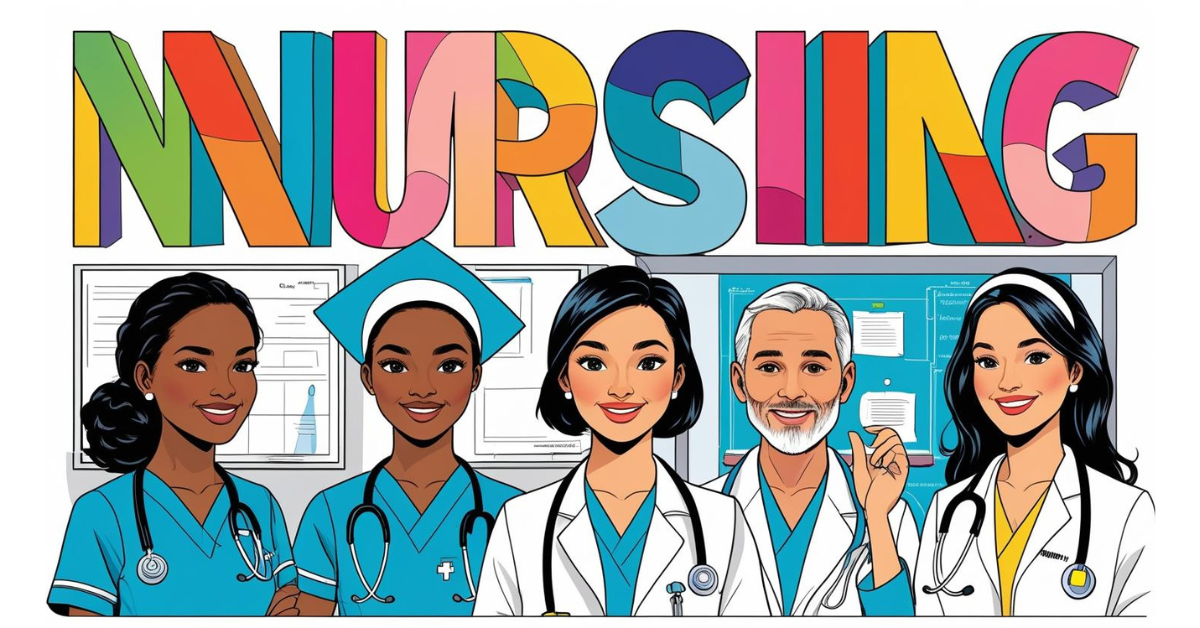The Effective Communication and Its Basics In Nursing Education and Practices. Active listening and empathy are essential communication skills that promote effective care between nurses and patients. Nurses who listen to their patients’ concerns, fears, and desires can provide personalized care tailored to their individual needs.
The Effective Communication and Its Basics In Nursing Education and Practices
Effective nursing communication is critical to patient safety, positive treatment outcomes, and the development of a strong nurse-patient relationship. It requires a variety of skills, including active listening, nonverbal communication, and clarity in oral and written communication. Effective communication also encompasses cultural awareness, honesty, and compassion.
Effective Communication
Communication is an essential tool for nursing practice because a critical link exists between effective communication and positive patient outcomes. Nurses must communicate effectively with all members of the health-care team, including other nurses, the patient, and the patient’s family (American Association of Colleges of Nursing [AACN], 2008). Effective communication involves two distinct steps: first, adequately articulating ideas; and second, understanding the listening audience with whom one is communicating (Rosenblatt & Davis, 2009).
Effective communication is accurate and timely, enhances quality of care, and fosters a healthy work environment. Mastering the art of communication seems simple because communicating is something people do every day. However, the intricacies of effective communication, such as knowing when communication is blocked or ineffective and registering nonverbal cues, must be studied and practiced.
Why Effective Communication Is Critical
Nurses must be as proficient in communication skills as they are in clinical skills (American Association of Critical-Care Nurses, 2016). In fact, effective communication is as critical to clinical practice as it is to building inter-professional and intra-professional teams, and it is a key element of successful nursing leadership. Effective communication is also vital to each Quality and Safety Education for Nurses (QSEN) core competency, particularly patient-centered care, team work and collaboration, and safety (Cronenwett et al., 2007).
To achieve patient centered care, nurses must effectively communicate with patients and their families to ensure that patients can make informed decisions and participate fully in their care. Teamwork and collaboration require nurses to be competent in communication skills to function productively on interprofessional and intraprofessional teams. Most importantly, nurses must understand that ineffective communication, in the form of miscommunication and gaps in communication, can lead to medical errors that jeopardize patient safety. In fact, The Joint Commission (TJC, 2014) cites communication errors as a leading root cause of sentinel events.
In 2004, VitalSmarts, in partnership with the American Association of Critical Care Nurses, conducted a nationwide study to explore specific concerns of health care professionals related to communication that may contribute to avoidable errors (Maxwell, Grenny, McMillan, Patterson, & Switzler, 2005). The investigators identified seven crucial conversations that health-care professionals frequently fail to have that could add to unacceptable error rates. The lack of these crucial conversations is still prevalent today, and the conversations relate to “medical errors, patient safety, quality of care, staff commitment, employee satisfaction, discretionary effort, and turnover” (Maxwell et al., 2005, p. 2).
The researchers conducted focus groups and interviews and collected survey data from more than 1,700 participants. The areas of concern identified were broken rules, mistakes, lack of support, incompetence, poor teamwork, disrespect, and micromanagement. Although more than half of the health-care professionals surveyed witnessed colleagues cutting corners and demonstrating incompetent practice in these areas, only 1 in 10 discussed their concerns with the coworker. Further, most surveyed did not believe it was their responsibility to address these concerns.
The three primary reasons health-care professionals do not speak up regarding their concerns were identified as a person’s lack of ability, belief that it was not his or her responsibility, and low confidence that speaking up would result in any good. Interestingly, the researchers identified a minority of 5% to 15% of health-care professionals who did speak up and noted a significant correlation that indicates that health-care professionals “who are confident in their ability to have crucial conversations achieve positive outcomes for their patients, for the hospitals, and for themselves” (Maxwell et al., 2005, p. 7).
In contrast, when health-care professionals do not speak up and address their concerns, morale and productivity suffer, and patient safety is compromised (Maxwell et al., 2005). The investigators urged health-care organizations to create cultures of safety in which all employees feel comfortable approaching each other about concerns. Such an environment will improve productivity, reduce nursing turnover, and increase physician cooperation. Nurses at all levels must communicate effectively in all areas of practice (American Nurses Association [ANA], 2016).
However, nurse leaders and managers have an obligation to promote effective communication in the workplace and, essentially, must model effective communication for staff. In fact, nurse managers spend more than 80% of their time communicating (Roussel & Swansburg, 2013). Characteristics of effective communicators include respecting what others have to say, having empathy, listening actively, avoiding sarcasm, asking not commanding, avoiding talking down or up to others, and encouraging input from others (Smith, 2011).
Facilitating effective communication and teamwork and ensuring that nurses are competent in communication skills are the responsibilities of nurse managers and leaders (Timmins, 2011). Nurse leaders and managers can significantly influence the use of effective communication by the following (Huston, 2014):
- Being effective communicators and role models themselves in all settings
- Establishing and upholding administrative structures to support and require effective communication and teamwork
- Effectively confronting and managing conflicts that arise from poor communication
A nurse leader and manager who is a role model for good communication skills can provide staff nurses with informal support and leadership, which ultimately create positive work environments and improve nurses’ confidence, motivation, and morale (Timmins, 2011).
Basics of Communication
To succeed in communicating effectively, nurses first become experts in the basics of communication. The following is a brief review of communication basics.
The Communication Process
The communication process includes the following elements (Adler & Proctor, 2014; Harkreader, Hogan, & Thobaben, 2007):
- Sender: The person who begins the transfer of information, thoughts, or ideas, and engages one or more other persons
- Encoding: The process the sender uses to transmit the message, including verbal language, voice inflection, and body language
Message: The information or content the sender is transferring, which can be transmitted verbally, nonverbally, and in writing
- Sensory channel: The manner in which the message is sent, including visual (e.g., facial expressions, posture, and body language), auditory (e.g., spoken word), kinesthetic (e.g., touching and nonverbal communication), and electronic (e.g., media such as e-mail or text message)
- Receiver: The person or persons whom the sender intended to receive the message
- Decoding: The process of interpreting the message
- Feedback: Determines whether the message was received as intended; can be verbal and nonverbal and allows the sender to correct or clarify the message sent and verify the message the basic model for communication.
A fatal flaw in the communication process is overlooking the final step of feedback. As George Bernard Shaw once said, “The greatest problem in communication is the illusion that it has taken place” (Shaw, n.d.). Simply sending a message and believing it to be clear and therapeutic does not mean that the message was clear or therapeutic to the receiver.
For instance, when communicating with a patient who is hearing impaired, using the auditory channel only most likely will not result in effective communication. Because the receiver must be able to decode the information the sender is transmitting, a hearing-impaired patient would benefit more from the visual channel than from the auditory channel. Nurses should never assume that they have communicated effectively until they have verified through feedback that the receiver clearly understood the message.
Verbal and Nonverbal Communication
People communicate using a combination of verbal language, or the use of words to convey messages by speaking or writing, and nonverbal cues, such as gestures, facial expressions, eye contact, posture, and use of space. Effective communication results when verbal and nonverbal messages are congruent.
Verbal Communication
Verbal communication is a conscious method of communication (Blais & Hayes, 2011; Harkreader et al., 2007). It occurs face to face, by telephone, and through written messages such as e-mails and memos. The average person uses approximately 20,000 words in an average day to communicate with others (Schuster & Nykolyn, 2010). Unfortunately, not all words have the same meaning for everyone, be it because someone speaks English as a second language or someone speaks English but in another part of the world. To communicate effectively, selecting words that are clear and avoiding ambiguous messages are best, as is seeking feedback to ensure that the message was received with the intended meaning (Schuster & Nykolyn, 2010).
Effective communication, whether spoken or written, is essential for nurses when dealing with patients, especially when documenting nursing care and pro viding discharge instructions for patients and families. Precise documentation of nursing care is vital because it is used by other nurses and health-care professionals and in administrative records across an organization (ANA, 2010). Clear and understandable discharge instructions can make the difference between a patient’s complete recovery and a repeat visit to the hospital.
For nurse leaders and managers, communicating verbally with staff in an effective matter is also critical. Nurse leaders and managers must convey clearly, typically in writing, information that is important for employees to know, such as policies and procedures and performance evaluations. When communicating through memos, e-mail, and faxes, nurse leaders and managers must write professionally and use easily understandable language (Marquis & Huston, 2015).
With written communication particularly, clarity is important because feedback is typically not immediate, and it may be some time before nurse leaders and managers are able to address questions and concerns. Regardless of the purpose, effective writ ten communication must contain language and terminology appropriate to the party or parties being addressed; correct grammar, spelling, and punctuation; logical organization; and appropriate use and citation of references (Blais & Hayes, 2011).
Nonverbal Communication
Even in moments of silence, communication continues. Nonverbal communication encompasses behaviors, actions, and facial expressions that transmit messages in lieu of or in addition to verbal communication. Nonverbal communication plays a central role in human interactions and is crucial in transmitting emotional and relational information (Henry, Fuhrel-Forbis, Rogers, & Eggly, 2012). Nonverbal communication can be conscious as well as subconscious and includes eye contact, facial expressions; gestures, posture, body movement, touch, and physical appear.
Facial behavior and expressions in particular (e.g., eye contact or lack of, smiling or grimacing) provide valuable clues and can indicate a person’s comfort level with the topic under discussion. Beyond paying attention to the receiver’s nonverbal cues, the speaker must be aware of his or her own body language because it must match the verbal message being sent. Consider a staff nurse who approaches the nurse leader and manager and asks whether he or she has a few minutes to discuss a patient situation.
The nurse leader and manager say “sure” but proceeds to continually look at his or her watch, and hence the verbal message sent to the staff nurse is incongruent with the nonverbal message. In addition, nonverbal communication alone can have great impact. Sometimes the mere presence of the nurse manager on the unit sends a message to staff, “I am interested in what is going on here.” Never underestimate the power of nonverbal communication.
Active Listening
Effective communication requires the ability to listen actively (ANA, 2015). Hearing and listening are two different things: Hearing is the physiological process of sound communicating with the hearing apparatus, whereas listening is more active and participatory (Rebair, 2012) and requires energy and a high level of concentration (Weaver, 2010). Active listening is broken down into five stages (Rebair, 2012):
- Receiving: Ensuring the nurse is in a good position to hear information clearly
- Attending: Engaging in the conversation by adopting positive body language, facial expressions, and gestures
- Understanding: Gaining an understanding of what is being said and what may not be said
- Responding: Responding to the patient in a nonjudgmental manner and being aware if anything may have upset him or her
- Remembering: Recalling previous conversations with the patient to establish a starting point when re-engaging
Active listening also requires the nurse to put aside judgment, evaluation, and approval in a concerted effort to be aware of the emotions and attitudes of others (Weaver, 2010). Although nurses are often the senders of messages in the communication process, they also need to practice attentive listening skills to achieve effective communication. Without active listening, a nurse will not be able to determine the patient’s perspective and consequently provide safe and quality nursing care.
Nurses should take as many opportunities as possible to be the receiver, by focusing on adopting body language, facial expressions, and gestures that are positive and relay to the sender that they are engaged in the conversation (e.g., being eye level with the patient, positioning the body so it is squarely in front of him or her), as well as reducing or blocking out distractions (Rebair, 2012).
Responding appropriately to the information communicated is also necessary and can be accomplished by reflecting back to the person (e.g., “I heard you say . . .”) or requesting clarification for something that was not understood (e.g., “I’m not sure I understand . . .”) (Beach, 2010; Rebair, 2012). Actively listening to staff as well as patients is also important. To have a satisfied and productive staff, nurse leaders and managers must hear what employees are saying as well as what they are not saying.
A nurse leader who actively listens empowers staff, provides information that facilitates work and quality improvement, and speeds up problem solving and decision making (Roussel & Swansburg, 2013). Whether communicating with patients or staff, nurse leaders and managers who listen to and remember what others says gain rapport and trust for future encounters. “When trust is high, communication is easy, effortless, instantaneous, and accurate. . . . When trust is low, communication is extremely difficult, exhausting, and ineffective” (Covey, 1991, p. 138).
Read More:
https://nurseseducator.com/didactic-and-dialectic-teaching-rationale-for-team-based-learning/
https://nurseseducator.com/high-fidelity-simulation-use-in-nursing-education/
First NCLEX Exam Center In Pakistan From Lahore (Mall of Lahore) to the Global Nursing
Categories of Journals: W, X, Y and Z Category Journal In Nursing Education
AI in Healthcare Content Creation: A Double-Edged Sword and Scary
Social Links:
https://www.facebook.com/nurseseducator/
https://www.instagram.com/nurseseducator/
https://www.pinterest.com/NursesEducator/
https://www.linkedin.com/in/nurseseducator/
https://www.researchgate.net/profile/Afza-Lal-Din
https://scholar.google.com/citations?hl=en&user=F0XY9vQAAAAJ


